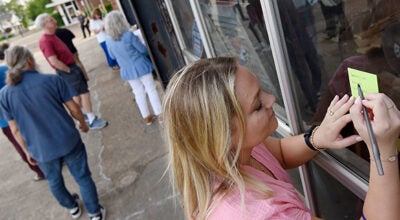Final inmate in prison riot pleads guilty
Published 12:05 am Friday, April 15, 2016
NATCHEZ — The final defendant in the 2012 Adams County prison riot in which prisoners took guards hostage and attacked others, resulting in one guard death and dozens of inmate injuries pleaded guilty Thursday to manslaughter charges. Hector Miguel Diaz-Osuna, 35, originally from Sinaloa, Mexico, pleaded guilty before U.S. District Judge David C. Bramlette III Thursday morning.
Court documents show Diaz-Osuna entered a plea agreement to plead guilty to voluntary manslaughter in relation to the case. He had previously been convicted of rioting and faces an additional 10 years in prison for that crime.
Sentencing for the inmate, who faces a maximum penalty of 15 years in prison for the manslaughter charge, will be June 16.
The May 20, 2012, riot Diaz-Osuna was a part of resulted in more than $1.3 million in damages to the prison, the Adams County Correctional Center.
Diaz-Osuna’s plea comes two days after Bramlette sentenced Haisom Ali, 39, originally from Cairo, Egypt, to 51 months in federal prison for rioting. Ali had pleaded guilty to the rioting charge in May 2014.
In addition to the prison sentence, Ali was ordered to pay restitution in the amount of $1,382,313.
During the riot, inmates stacked food carts in order to access the roof of the building on which Sgt. Catlin Carithers was standing as part of his response to the attack. Inmates assaulted Carithers with their hands, feet and improvised weapons, including a broom and a metal pole, Assistant U.S. Attorney Patrick Lemon said in previous hearings for other inmates.
An autopsy later concluded Carithers — who was deploying crowd control gas from the roof at the time of the attack — died of blunt force trauma associated with his injuries.
The riot, which lasted for several hours, initially started as an organized mass disobedience by the prisoners, who told investigators they were trying to take a list of demands to prison officials to address what the prisoners perceived as issues with food quality, medical care and disrespectful guards.





